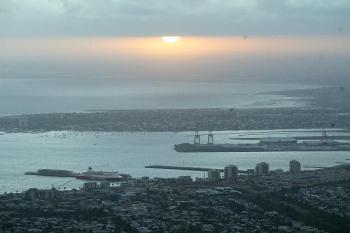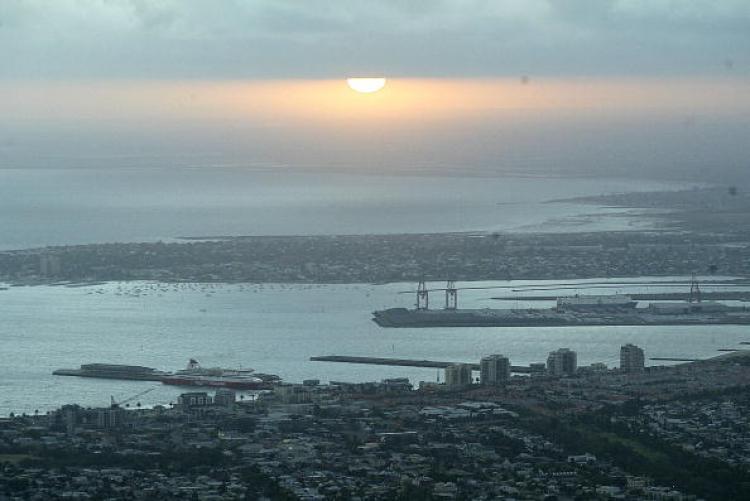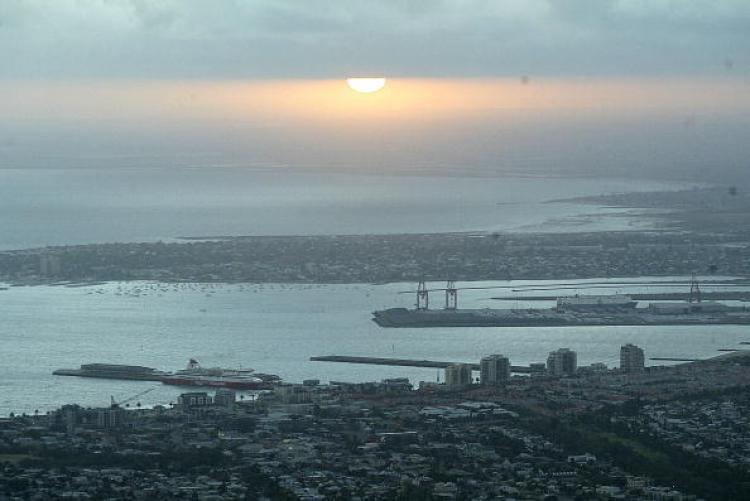It is early in the morning at the seaside village of Sorrento and despite chilly, windy conditions, a group of enthusiasts is donning wetsuits and piling into a small boat to swim with the dolphins.
The wild bottlenose dolphins of Port Phillip Bay are genetically different from any other dolphins in the world and enjoy some interaction with humans in their own environment.
Waiting to board the boat is Zali, a 13-year-old girl who is one of the small group keen to brave the water. The boat is rocking and it looks quite small, however Zali said she was not nervous – just excited. Asked why she wanted to swim with the dolphins, Zali said: “I don’t know; it is just one of those things it would be good to do. I like dolphins because they’re friendly and cute and they’re my favourite animals.” Then she added: “I would like to be a marine biologist and work with dolphins.”
Everyone clambers aboard and all listen attentively as crew member Jess gives detailed instructions on how to use a snorkel mask before they get into the water after the dolphins have been sighted. Excitement is high as the boat sets forth towards the heads. There are many interesting things to see in the Port, including the bird life and the many different yachts and ships.
The boat circles a man-made floating deck with seals lolling out of the water. Jess tells us that this is the exclusive meeting place for the bachelor seals. With much belching and scratching, some are sorting out their differences while others just snooze blissfully, ignoring human stares. Standing in the middle of the heaving mass is one brave seagull, ever hopeful that a tasty morsel might be regurgitated in its direction.
In the little galley down below, one of the deck hands cooks scones for morning tea.
Up on deck, boat owner Judy Muir says that Polperro Dolphin Swims has been operating as a family business for over 20 years. She says her business will be greatly affected by the deeper dredging of the shipping channels of the bay that is now taking place.
One of the world’s biggest dredging operations, up to 48 million tonnes of sand and silt habitat is to be dredged from the port’s sea bed and the Yarra River. When maintenance dredging is included, a total of 78 million tonnes – equivalent in size to a 15x4 metre trench from Melbourne to Sydney – will have been removed over a 30-year period.
The Port of Melbourne authorities say the dredging of the bay is required to allow the new generation container ships easy access to the port so as to keep Melbourne’s status as the largest port in Australia and maintain jobs.
Ms Muir, however, is fearful for the dolphins. The murky water caused by the dredging will slowly destroy their food chain and the fragile ecosystem of the bay may never recover.
“It has an ecological effect in terms of the food chain and that may well be something more suited to viewing with a backward glance after many years…It has long-term consequences with noise pollution on dolphins,” she said, and would also interrupt their normal pattern of travel.
“So we don’t know what those implications will be and certainly anywhere where you curtail your normal activities of a wild population of very large mammals, there has to be a tale to tell at the end of it. And those consequences are unknown.”
According to Friends of the Earth, the southern waters of Australia, including Port Phillip Bay, have the highest diversity of marine species anywhere in the world. The dolphins are just one of 5000 species, some unique, to be affected in the region. Penguins, seals, sharks, whales and thousands of marine plants and animals interactively rely on Port Phillip Bay.
Environmentalists are concerned that the fragile anchovy population, which supports the popular Phillip Island penguin communities, will be destroyed from the dredging.
They are also concerned that toxic chemicals and heavy metals that have been put into the Bay over the years will be stirred up.
“The dredge area is highly contaminated, according to the Environmental Affects Study Independent Panel,” said Earthcare spokesperson Josephine Samuel King.
“The contaminants include lead, mercury, arsenic and zinc. Many of these are poisonous to animals such as penguins.”
Meanwhile, Ms Muir continues for as long as she can with her dolphin tours. Ironically, the day has not brought the hoped for swim – the weather conditions were not right for dolphin swimming. Ms Muir refunds the money, but everyone agrees it was an interesting morning and vows they will return to swim with the dolphins on another day.






